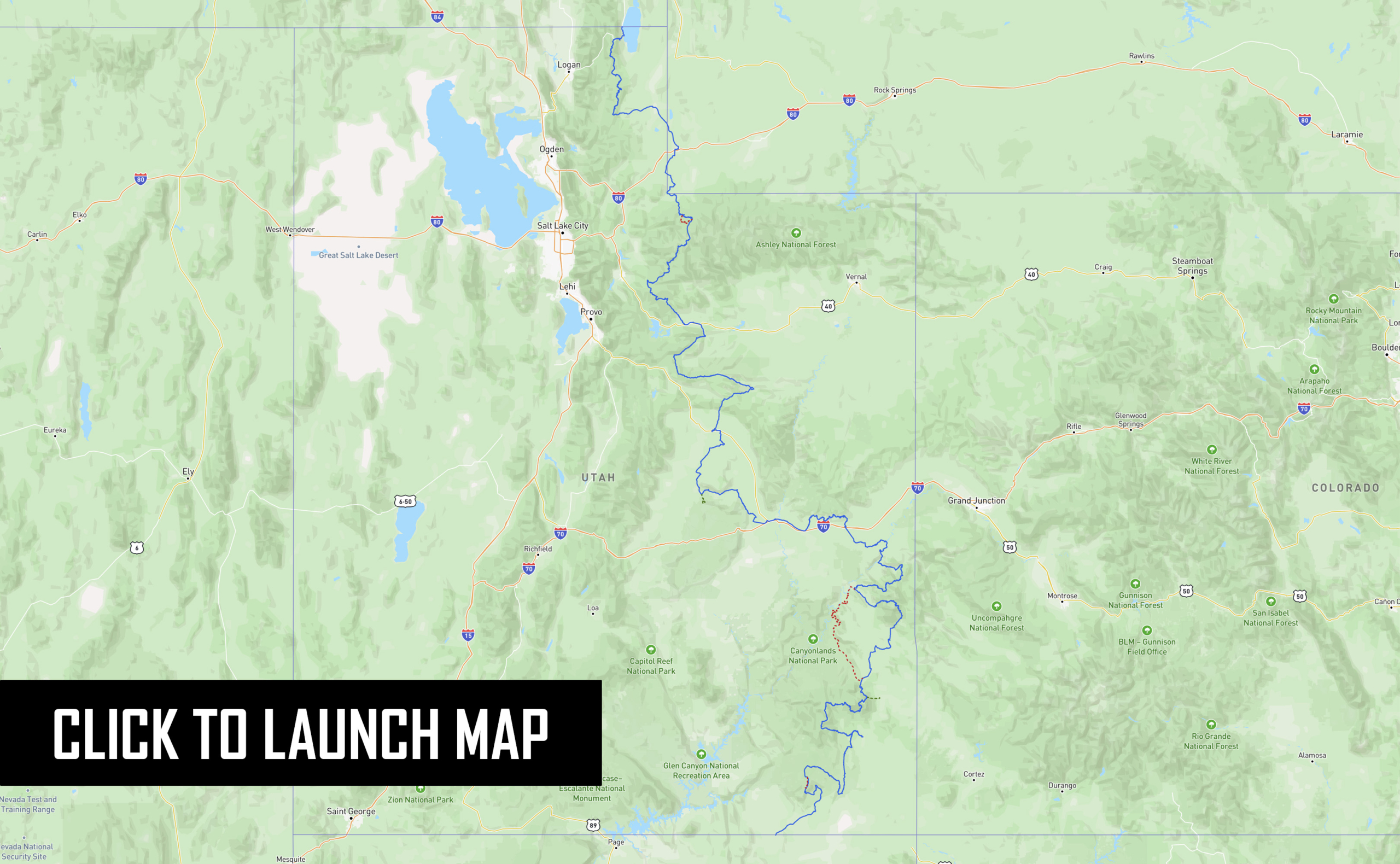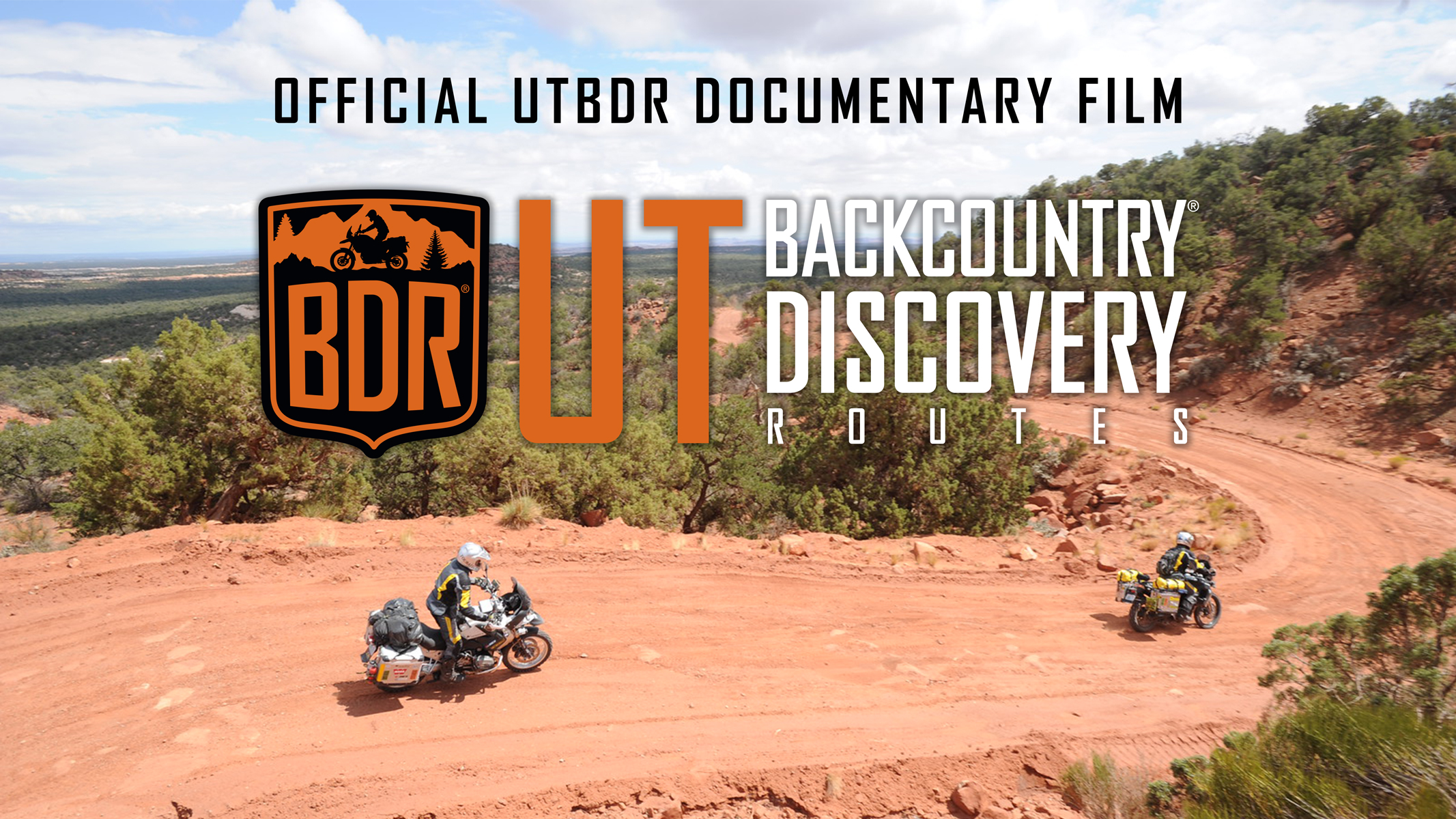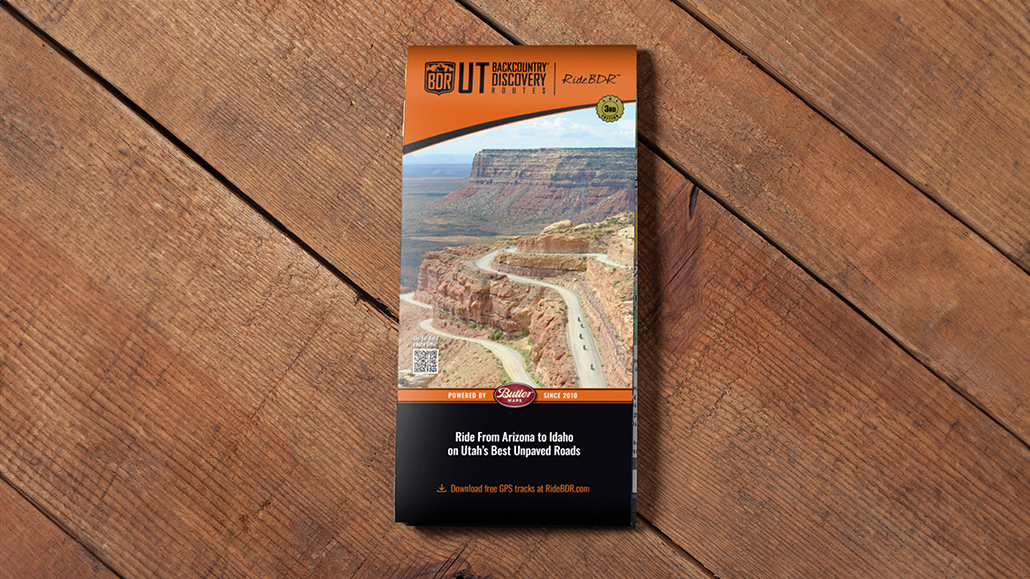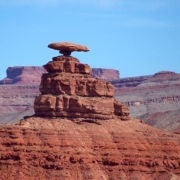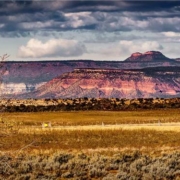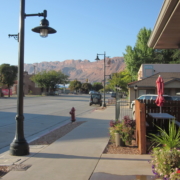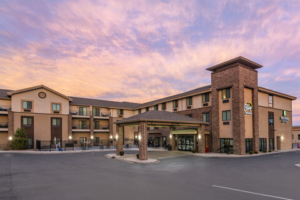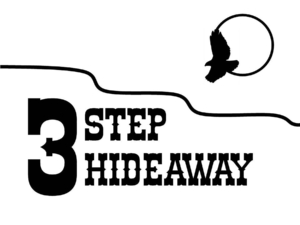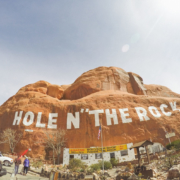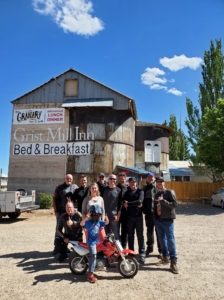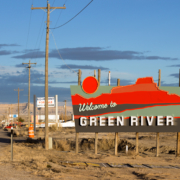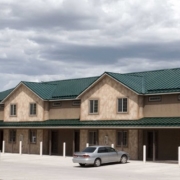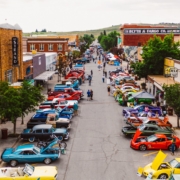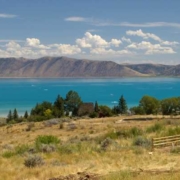Bears Ears Pass 8506′
The next detour off the UTBDR takes riders on a more than five-mile journey each way to a pass between the “ears” of Bears Ears. The distinctive rock towers can be seen for miles, and Bears Ears Pass takes riders right between the two buttes near the southern end of Elk Ridge. Named for the prominent towers, the recently established Bears Ears National Monument gives the area a name but there’s no official visitor center to see in this remote area. Nearby the Kane Gulch Ranger Station is the closest thing to a visitor center. From the pass, it’s easy to ride on for a few more miles to reach the long-standing Natural Bridges National Monument which has a campground in addition to rare natural features to photograph.
Natural Bridges National Monument
Natural Bridges National Monument has a one-way paved loop road with overlooks for each of the three rare natural bridges (Sipapu, Kachina, and Owachomo). The bridges are visible from the viewpoints, but the best way to see them is to hike down a bit. Another short trail leads to a view of a cliff dwelling known as Horse Collar Ruin. Natural bridges are different than arches in that bridges have a watercourse running under them and having three in close proximity is why this park was created. There is a nice campground and visitor center at the National Monument. If you camp at the park, ask the rangers if they are hosting a star-gazing event after dark. While this is a longer side trip from the UTBDR than most discovery points, it’s a great place to discover.
Gooseberry Guard Station Meadow
For another scenic stop that’s virtually right on the route, a short driveway leads riders to the Gooseberry Guard Station Meadow. The beautiful meadow is surrounded by aspens and could be used to camp in a pinch. There might be maps and brochures available at this Manti-La Sal National Forest ranger station but the building is not staffed to support visitors. A steep and rocky hiking trail begins near the meadow and is open to motorcycles but it’s not for adventure bikes. Gooseberry is mostly just a scenic spot where you can take a short breather, or get in some rest before continuing on to the next adventure and the next stop on the UTBDR.
Johnson Creek Viewpoint
North Creek Pass 10,312′
There are many viewpoints to experience as riders round the Abajo Mountains, but one place in particular offers amazing views to the south. A switchback at an elevation of 9,391 feet offers up some of the best views looking out over the white spine of Comb Ridge and Cedar Mesa. Out in the distance it’s even possible to take in the Carrizo Mountains of northeast Arizona. Referred to by locals as The Blues, this remote mountain range is a popular spot for outdoor fun, attracting UTBDR riders, hunters and other thrill seekers in search of the next backcountry adventure.
Newspaper Rock Petroglyph Panel
Like reading a newspaper from cover to cover, trace back generations of Anasazi, Fremont, Navajo and other cultures’ artists with a visit to Newspaper Rock Petroglyph Panel. Likely carved starting 2,000 years ago, the rock called Tse’ Hane in Navajo translates to “rock that tells a story”. What a story it is, as hundreds of images cover the rock art panel, altogether combining to form one of the largest known collections of petroglyphs in the nation. View a mix of animals, humans and symbols at this well-preserved site, located at the upper end of Indian Creek Canyon.
Needles Outpost – (Lockhart)
When riding the expert-only Lockhart Basin route, it’s a necessity to fuel-up at Needles Outpost. While the fuel is expensive at the outpost, it’s worth every penny to top off a tank at this off-the-beaten-path store. The stocked location is also a good spot for riders to load up on drinks and snacks. Check out the campground if there’s not enough time to get through Lockhart. Found right next to an entrance of the Needles District of Canyonlands National Park, the outpost also provides showers and other necessary facilities for overnight visitors passing through this section of the southern UTBDR.
Big Spring Canyon Overlook (Lockhart)
Near your gas stop at Needles Outpost on the Lockhart Basin section of the UTBDR you’ll find the entrance to the Needles District of Canyonlands. The visitor center can answer any questions and guide you to things to do in this corner of Canyonlands National Park. Just inside the entrance there are a couple easy things to see including a roadside cliff ruin, Wooden Shoe Arch, and several overlook viewpoints. Hiking trails over more opportunities to explore if you plan to stay for the day. This is a beautiful part of Canyonlands and it’s easy access from the BDR.
Hamburger Rock Campground (Lockhart)
On the Lockhart Basin Road not far from Highway 211 and Needles Outpost, riders will find a unique geologic feature called Hamburger Rock and some camping spots. Each of these official BLM camping spaces are first come first served and can be popular as they are not far from the Needles area of Canyonlands National Park and those campgrounds fill fast. Hamburger Rock is made up of many strange looking sandstone rocks and hoodoos some of which provide shade for the campers. Picnic tables, fire pits, and bathrooms are provided at this campground, but there is no water so bring some with you.
Hurrah Pass (Lockhart)
Now that the extreme Lockhart Basin route is over its time to let out a big “hurrah” and look ahead to the next adventure on the UTBDR. This point of the journey brings riders to Hurrah Pass and the expectation of a tamer ride ahead. That’s because the mountain pass marks the very northern end of the expert section of the route approaching Moab. Views at the pass include red rock towers, colorful potash ponds, and the Colorado River. Take some time to soak in all the scenery during this part of the ride, before coming up on a much-needed stop to stock up on fuel, food, and other supplies to continue the journey ahead.
Birthing Scene Petroglyph Panel (Lockhart)
Moonflower Canyon Access (Lockhart)
Geyser Pass in La Sal Mtns 10,538′
Arches National Park
Just outside of Moab, make the slight detour into Arches National Park. Home to thousands of natural rock arches, the popular park is an especially good choice for first-time visitors. Make the short detour to get better views of the park’s famous formations, like Balanced Rock, Delicate Arch, and Devils Garden. The Main Park Road and several side roads offer a riding opportunity with many views and enticing points of interest. Join other travelers at the Arches Visitor Center to fill up a water bottle and learn more about all the places to see and experience in the area. Whether it’s a short visit to the park or a day-long trip to Arches, this national park is one that should be on your bucket list.

